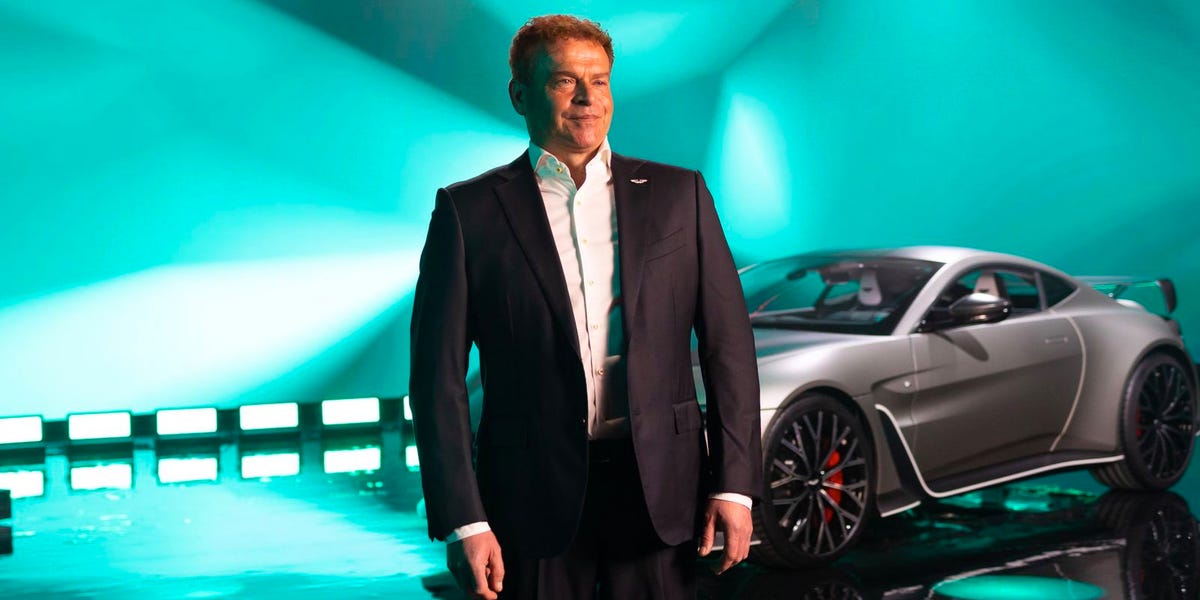Tobias Moers Is Out as Aston Martin Replaces CEO, Again

Tobias Moers is replaced as the boss of Aston Martin after less than two years. Former Ferrari CEO Amedeo Felisa is the new Aston boss. Another ex-Ferrari exec, Roberto Fedeli, is set to become Aston CTO.
It has not quite been two years since we last told you about Aston Martin ousting a CEO and installing a replacement from another automaker. Now history is repeating with confirmation that the AMG executive who took the top job at the British sports-car maker in 2020, Tobias Moers, is himself leaving—and is being succeeded by one-time Ferrari CEO Amedeo Felisa.
The official release announcing the change thanked Moers for his service to Aston, and said that—although he has already left the company’s board—he will continue to support the leadership team until the end of July. Felisa is already a non-executive director of Aston Martin, but previously worked at Ferrari for 26 years, leading road car development for much of that time and latterly as the Italian company’s CEO. Yet at 76 years of age, Felisa seems unlikely to be taking on such a demanding and likely stressful new job for the long haul. He will be joined at Aston by another former Ferrari executive, Roberto Fedeli, who will serve as Chief Technical Officer.
While Moers’s sometimes abrasive management style was at least partially responsible for some of Aston’s executive exodus (chief designer Miles Nurnberger, chief engineer Matt Becker and head of Special Operations David King all left last year) the German did help to bring some much-needed stability to the brand and also to increase sales. Aston’s first-quarter results for 2022, released alongside news of Moers’ departure, show that although the company is still losing money it has increased revenues and is on track to deliver more than 6600 cars globally this year. Last year it managed 6182. Moers also spearheaded development of the well-received Vantage F1 Edition, DBX 707 and the sold-out Vantage V12.
Aston Martin DBX 707
Aston Martin
But Moers also seems to have had a strained relationship with Aston’s executive chairman, Lawrence Stroll, the Canadian billionaire who also owns a substantial stake in the company. In January Autocar reported that Moers’s future was in doubt, and although the company responded with a statement denying the claims, the relationship only lasted for another five months.
What does this mean for Aston products? In the short term, probably not a great deal: development of revised versions of the company’s sports-car range is well underway, and Aston has already agreed a deal with Mercedes for widespread technology sharing. But Felisa’s arrival suggests there may well be another change of direction for Aston’s supercar projects, with the company having previously committed to developing two mid-engined models around a hybridized powertrain.
The original plan had been for Aston to develop its own electrically assisted V-6 for these, one that Moers switched to proposed use of an AMG-sourced V-8. Given Felisa and Fedeli’s long association with Ferrari, another new direction may be on the cards, with Aston insiders saying consideration is already being given to opening an engineering center in Italy.
Whether those models can bring the volumes that Aston needs for long-term viability is a different question: the official target is to move production to 10,000 cars a year, something that would doubtless be made easier in the current market with more SUV variants than pure-blooded sports cars.
One thing we can safely predict is that Aston’s future will continue to provide plenty of drama, as well as—we hope—compelling products. We promise to report all of it.
This content is created and maintained by a third party, and imported onto this page to help users provide their email addresses. You may be able to find more information about this and similar content at piano.io



